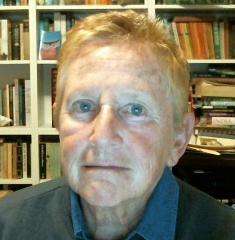The HIP Company of Perth, Western Australia, has been in business for nearly four years now, and this is probably their most ambitious project to date and, happily, a successful one. John Eccles' version of Semele uses pretty much the same libretto by William Congreve as Handel's, but predates it by some 36 years, being composed in 1707, but never apparently performed until the 20th century.
The production, directed by mezzo soprano Caitlin Cassidy, was described as semi-staged, which is somewhat selling it short. I don’t suppose anyone was really expecting to see a giant eagle to swoop from above, nor fierce dragons with scaly tongues, let alone – spoiler alert! – Semele being burned to a crisp... and, in any case, those marvels are all described by the singers so we don’t need to see them. Rather, the performers moved with reasonable fluidity around, and sometimes off, the stage, carried out relevant actions and interacted with dramatic conviction. Props were minimal but effective – a skeletal arch acting as a flower-encrusted bower and a hiding place for Somnus under a sheet, a chair, a small table, with costuming modern but appropriate to the relevant roles. The priests wore concert black with a green scarf for the boss, the other men wore black tie suits, the women long elegant gowns. Jupiter and Juno were distinguished by gold diadems.
The venue, like many town halls around Australia, was built in the early 20th century, with a functioning proscenium stage and a capacity of about 300. The orchestra was verging on the skeletal (four violins, viola, cello, double bass, harpsichord and percussion), but was adequate for the space. It was led by Baroque-experienced violinist Shaun Lee-Chen, who is also the current concertmaster of the Australian Brandenburg Orchestra. He was ably supported by harpsichordist James Huntingford, and the ensemble provided an excellent accompaniment to the singers as well as bringing precision and finesse to the several orchestral interludes.
Most of the singers are what is usually described these days as “emerging”, but featuring in the title role was the more established soprano, Bonnie de la Hunty, one of HIP’s founding members and directors, seen in last year’s Pinchgut production of Handel’s Rinaldo. Her effortless pure soprano was perfect for the title role, and she looked every considerable inch a candidate for the god’s affections. Jupiter was played by baritone Lachlann Lawton, who impressed a few years ago jumping into the title role of Mendelssohn’s Elijah. An equally effortless singer, he appeared more than comfortable as the besotted lover. Equally at home on the stage was another young baritone, Benjamin del Borello, singing both Somnus and Apollo, with a rich resonant sound.
The younger singers did not seem quite as comfortable in their stagecraft, but this will undoudtedly come with time. Vocally, they all more than held their end. As Juno, mezzo-soprano Olivia Sanders-Robinson brought a strong vocal presence and the right sort of waspish authority to bear. One of the oddities of this Eccles version (if you are familiar with the Handel) is that Juno has more opportunities for coloratura singing than the heroine, and Sanders-Robinson made the most of them, particularly in “Above measure” with its final cadenza. Soprano Sophie Hamer was Ino, singing well and bringing out some of the possibilities for humour, for instance, her barely concealed excitement at Semele’s disappearance: a portent “To me, I hope, of fortunate event”. Cupid was nicely sung by soprano Lucinda Nicholls, recently heard to advantage in WASO’s Vivaldi Gloria with de la Hunty (also Lawton), and Iris was an equally pleasing Rachel Liu.
Athamus here was a tenor, sung by a plaintive Louis Hurley. Baritone Brett Peart was a firmly sung Cadmus, and the three priests/augurs were equally satisfactory – David Woods (chief priest and baritone), Jason Kroll (tenor) and Joshua Adams (baritone). The amount of young talent on display was impressive. It is a great pity that there was only one performance.




